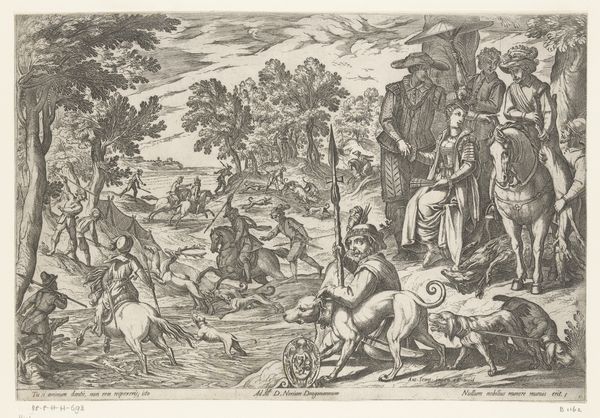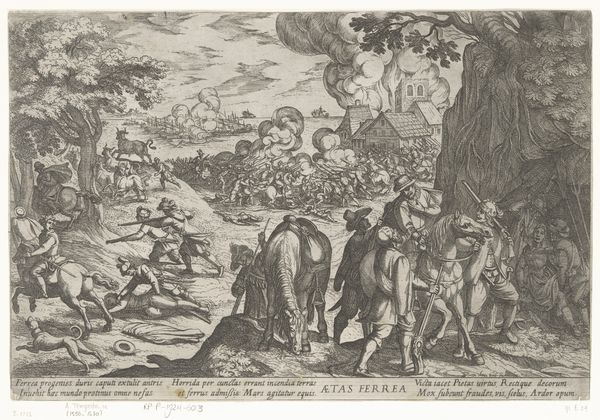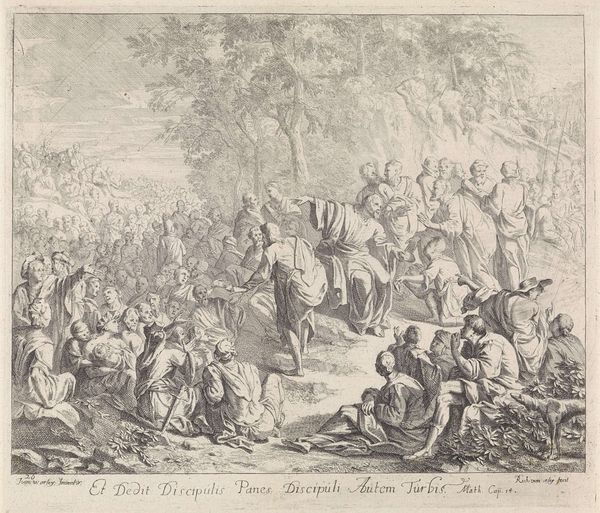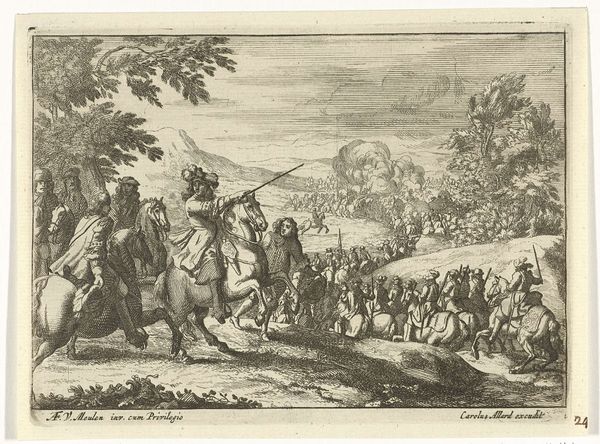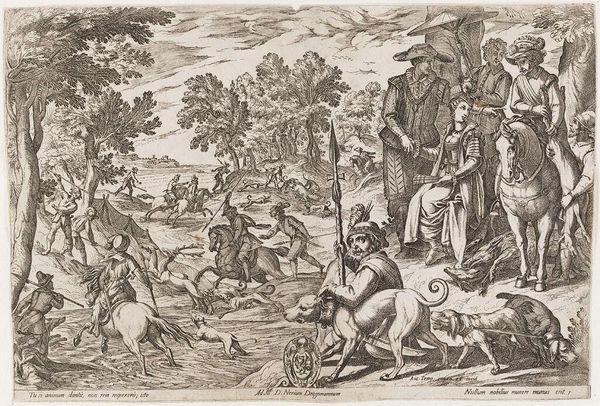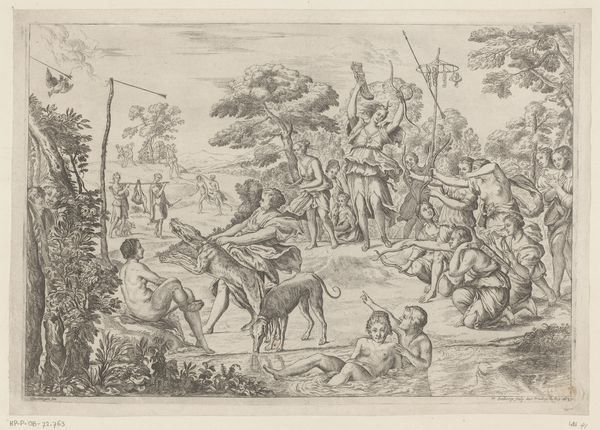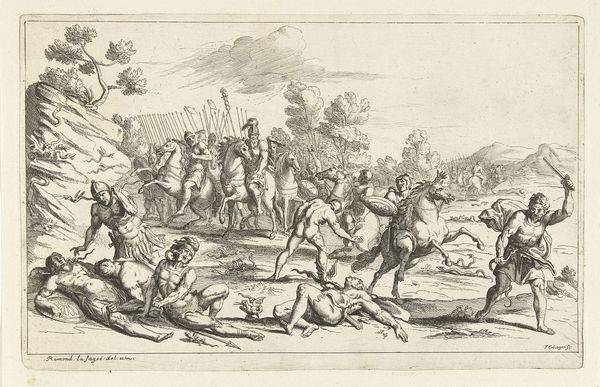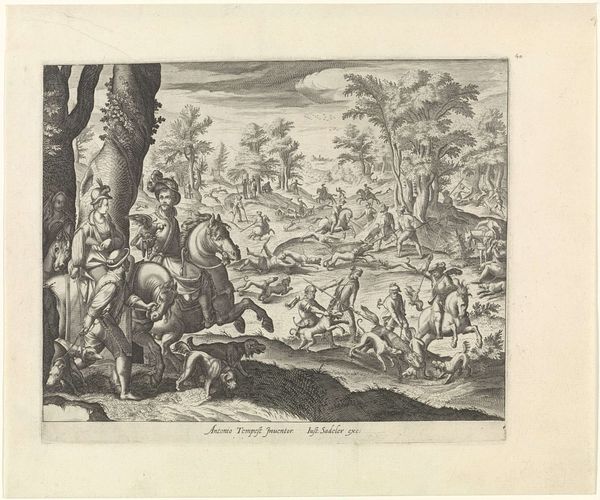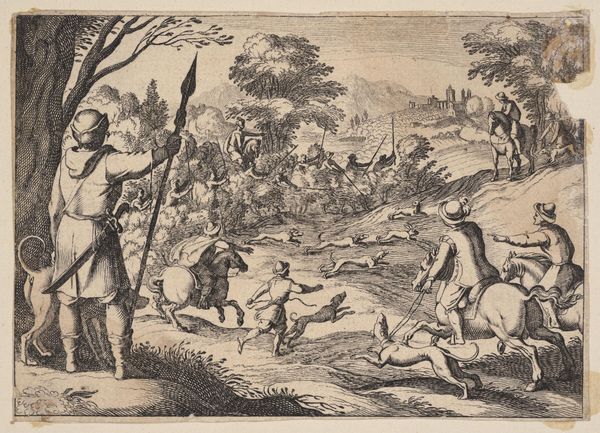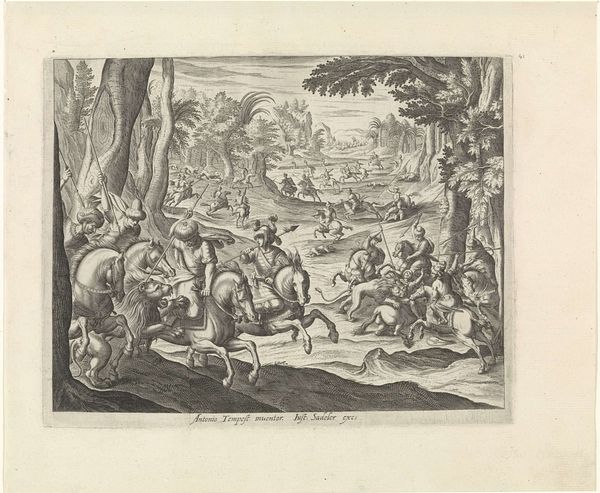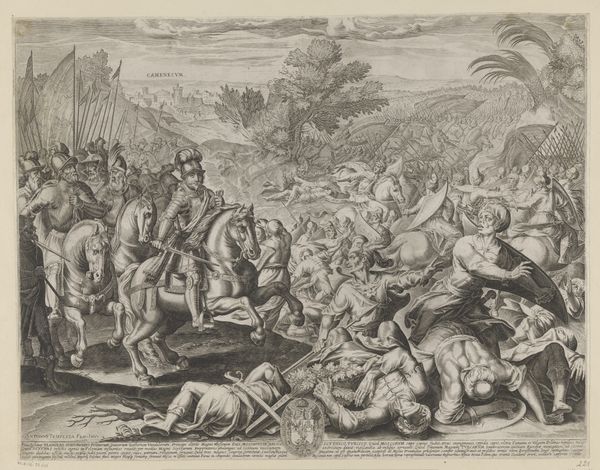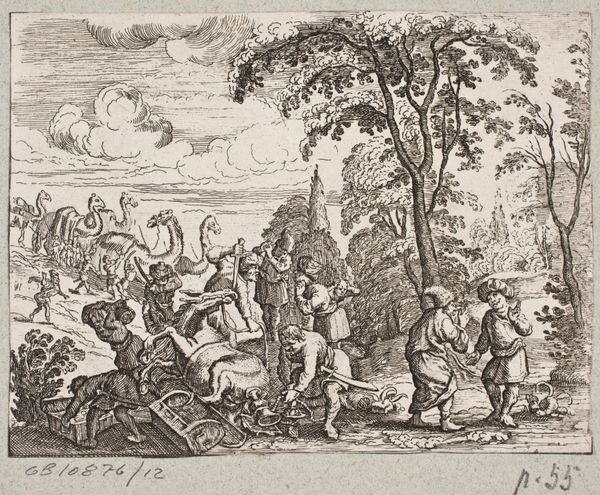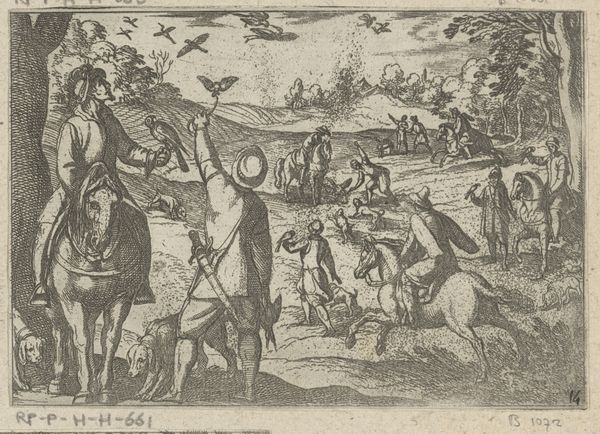
drawing, ink, engraving
drawing
narrative-art
pen drawing
mannerism
figuration
ink
history-painting
engraving
Dimensions: height 318 mm, width 425 mm
Copyright: Rijks Museum: Open Domain
Curator: Today we're looking at an engraving called "Doortocht door de Rode Zee," or "Passage Through the Red Sea," which dates sometime between 1548 and 1570. Editor: It's striking! There's so much movement and a dramatic diagonal that slices the composition into chaos on the right and relative calm on the left. It feels unbalanced. Curator: Indeed. This print is characteristic of the Mannerist style with its dense composition, elongated figures, and dramatic narrative. What meanings do you extract from its overall symbolism? Editor: Well, water is an interesting, often paradoxical, motif here. As an elemental plane, the parting of the Red Sea symbolizes cleansing but, even more acutely, deliverance from imminent destruction and death. You see the turmoil with the soldiers drowning in the background. Curator: Precisely. The crossing is not merely an event; it is a pivotal transformation, the transition from slavery to freedom. Think about what this historical exodus represents on a much broader, timeless scale. Editor: I'm intrigued by the figures who are already safe on the shore. There's this strange sense of resignation, a removal. But they hold the weight of knowing they were saved when others could not be. Curator: It certainly encapsulates collective memory. It is not enough that only one person or a few people get across to salvation. It has to be an act for many. It must signify change for the people. This becomes part of cultural heritage and informs our understanding of what freedom and salvation represent to us as humans. Editor: I like that idea. The artwork shows me a snapshot of salvation, reminding me that collective deliverance is more meaningful than individual escape. Curator: In many ways, I agree, and perhaps that's why the artist or artists who worked on this were trying to illustrate something profound that will resound across cultural beliefs. It's beautiful that an ink drawing from the 16th century could give us new perspectives.
Comments
No comments
Be the first to comment and join the conversation on the ultimate creative platform.
